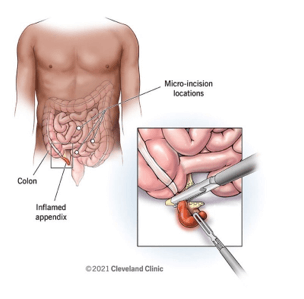When the practical nurse (PN) atempts to assist an 18-year-old client with a mild mental disability to ambulate on the first postoperative day after an appendectomy, she becomes angry and says, "PN, 'Get out of here! I'll get up when I'm ready!"
Which response is best for the PN to make?
A. "You must ambulate to avoid complications which could cause more discomfort than ambulating."
B. "I know you feel angry about the pain of ambulation, but this is a necessary part of getting well."
C. "Your healthcare provider has left specific instructions to ambulate on the first postoperative day."
D. "I will be back in 30 minutes to help you get out of bed and walk around the room today."
The Correct Answer is D
An 18-year-old client with a mild mental disability is a client who has a lower than average intellectual functioning and some limitations in adaptive skills, such as communication, socialization, and self-care. A mild mental disability may affect the client's ability to understand, cope, or cooperate with medical interventions, such as ambulation after surgery.
Ambulation is the act of walking or moving around. It is an important part of postoperative care, as it helps to prevent complications such as deep vein thrombosis, pulmonary embolism, pneumonia, atelectasis, constipation, and pressure ulcers. Ambulation also promotes circulation, wound healing, and muscle strength.
When the practical nurse (PN) atempts to assist the client to ambulate on the first postoperative day after an appendectomy, the client becomes angry and says, "PN, 'Get out of here! I'll get up when I'm ready!" This may indicate that the client is experiencing pain, fear, anxiety, or frustration due to the surgery and the recovery process .
The best response for the PN to make is to acknowledge the client's feelings, provide reassurance and support, and set a clear and realistic goal for ambulation. This will help to establish rapport, reduce resistance, and motivate the client to participate in the care plan.
Therefore, option D is the correct answer, as it shows empathy and respect for the client's feelings, while also informing the client of the expectation and time frame for ambulation. Option D also allows the client some time to prepare mentally and physically for the activity.

Nursing Test Bank
Naxlex Comprehensive Predictor Exams
Related Questions
Correct Answer is B
Explanation
- A bowel patern is the frequency, consistency, and appearance of a person's bowel movements. A normal bowel patern is what's normal for each person, and it can vary depending on factors such as diet, age, physical activity, and health conditions.
- A focused gastrointestinal system assessment includes collecting subjective data about the patient's history of gastrointestinal disease, signs and symptoms of gastrointestinal problems, diet and nutrition, and bowel patern. It also includes inspecting and auscultating the abdomen for any abnormalities³.
- When a client reports having a bowel movement three days ago, the first action that the practical nurse should implement is to determine the client's usual bowel patern. This will help to evaluate if the client is experiencing constipation or if this is their normal frequency. It will also help to identify any changes or risk factors that may affect the client's bowel function.
Therefore, option B is the correct answer, while options A, C, and D are incorrect.
Option A is incorrect because administering a stool softener without assessing the client's bowel patern may not be appropriate or effective.
Option C is incorrect because encouraging ambulation may help to stimulate bowel activity, but it is not the first action to take.
Option D is incorrect because recommending dietary changes may be helpful for preventing or treating constipation, but it is not the first action to take.
Correct Answer is B
Explanation
Choice A rationale:
Objective data. Rationale: Objective data are observable and measurable facts obtained through physical examination or diagnostic tests. The statement incorrectly labels the data as objective when it is, in fact, based on the client's feelings and perceptions, making it subjective.
Choice B rationale:
Subjective data. Rationale: Subjective data are information provided by the client, including their feelings, perceptions, and experiences. The statement correctly labels the data as subjective, as it reflects the client's report of thirst and hunger.
Choice C rationale:
Primary data. Rationale: Primary data are original data collected directly from the source, such as a client's medical history or interview. However, this classification does not address the nature of the data as being subjective or objective, so the statement does not provide a complete answer.
Choice D rationale:
Secondary data. Rationale: Secondary data are data obtained from sources other than the client, such as medical records or research studies. Similar to choice C, this classification does not address the nature of the data as being subjective or objective.
Whether you are a student looking to ace your exams or a practicing nurse seeking to enhance your expertise , our nursing education contents will empower you with the confidence and competence to make a difference in the lives of patients and become a respected leader in the healthcare field.
Visit Naxlex, invest in your future and unlock endless possibilities with our unparalleled nursing education contents today
Report Wrong Answer on the Current Question
Do you disagree with the answer? If yes, what is your expected answer? Explain.
Kindly be descriptive with the issue you are facing.
